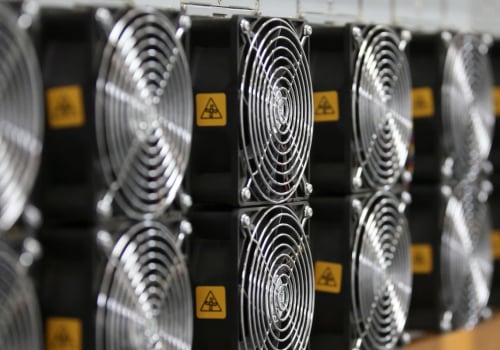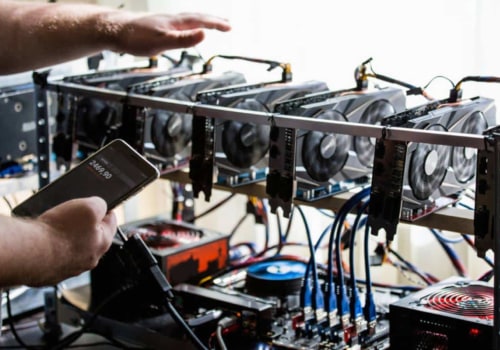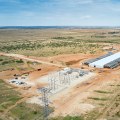You may want to look into the local regulations where you live, but for now, bitcoin mining is legal in the US. UU. Only 1 megabyte of transaction data can fit in a single bitcoin block. The 1 MB limit was set by Satoshi Nakamoto, and this has become a matter of controversy because some miners believe that the block size should increase to accommodate more data, which would mean that the Bitcoin network could process and verify transactions more quickly.
Let's say I tell three friends that I'm thinking of a number between one and 100, and I write that number on a piece of paper and stamp it on an envelope. My friends don't have to guess the exact number; they just have to be the first person to guess any number that is less than or equal to it. And there's no limit to the amount of guesswork they get. In terms of Bitcoin, simultaneous responses happen frequently, but at the end of the day, there can only be one winning answer.
When multiple simultaneous responses are presented that are equal to or less than the target number, the Bitcoin network will decide by simple majority (51%) which miner to honor. As you can see here, their contribution to the Bitcoin community is that they confirmed 1,768 transactions for this block. If you really want to see all 1,768 transactions in this block, go to this page and scroll down to the Transactions section. Participants with a small percentage of the mining power have very little chance of discovering the next block on their own.
For example, a mining card that could be purchased for a couple of thousand dollars would represent less than 0.001% of the network's mining power. With such a small chance of finding the next block, it could be a long time before the miner finds a block, and the difficulty of climbing makes matters even worse. The miner may never recover his investment. The answer to this problem is mining pools.
As mentioned earlier, the easiest way to acquire Bitcoin is to simply buy it on one of the many Bitcoin exchanges. Alternatively, you can always take advantage of the peak strategy. This is based on the old mountain range that during the California gold rush of 1849, the smart investment was not to look for gold, but to have the spikes used for mining. The legality of Bitcoin mining depends entirely on its geographical location.
The concept of Bitcoin may threaten the dominance of fiat currencies and government control over financial markets. For this reason, Bitcoin is completely illegal in certain places. Bitcoin mining is an energy-intensive process with custom mining systems that compete to solve mathematical puzzles. The miner who first solves the puzzle is rewarded with bitcoin.
The bitcoin mining process also confirms transactions on the cryptocurrency network and makes them reliable. The basis for this is the so-called “blockchain”. This is because in crypto mining or Bitcoin Mining, each individual transaction is grouped into “blocks”. They are then aligned in a linear sequence and linked to each other through a decentralized peer-to-peer network.
All blocks have so-called “hash values”, which are a kind of check number for transactions made. The check number in turn contains the individual hash values of the current transaction, as well as the hash values of the respective previous transaction. For its generation, a conventional computer can be used, which performs a cryptographic function, also called a “hash function” (SHA25). Thanks to this procedure, manipulation of transactions is impossible, since a subsequent change within the chain would not only stand out, but is not even mathematically possible.
If only one value were manipulated, the subsequent value would also deviate from the actual sequence. Illegal activity is a small fraction (3%) of what actually happens on the Bitcoin blockchain. The decrease in the number of bitcoins awarded to miners every four years makes the activity even more unattractive. It is usually the miner who has done the most work or, in other words, the one who verifies most of the transactions.
The program that miners voted to add to the Bitcoin protocol is called a segregated witness or SegWit. In addition to the cunning methods of hackers, users might think that their computer is getting old and slow when, in fact, hackers are using their resources to mine cryptocurrencies, explained Interpol's Tee. The mining process also confirms transactions on the cryptocurrency network and makes them reliable. Not only do miners have to consider the costs associated with the expensive equipment needed to have a chance to solve a hash problem, but they must also consider the significant amount of electrical energy that mining rigs use to generate large amounts of nonces in search of the solution.
In addition, transactions are never sent to a particular miner, it is mainly due to the blind luck (weighted by hashing power) that the miner ends up extracting a particular block of transactions. With the establishment of cryptocurrency, the era of a new means of payment has ushered in Crypto Mining. Apart from the coins minted through the genesis block (the first block, which founder Satoshi Nakamoto created), each of those bitcoins were created because of the miners. It is also affected by the number of new miners who have joined the Bitcoin network because it increases the hash rate or the amount of computing power deployed to mine the cryptocurrency.
Although individual miners using desktop systems played a role during the early days of cryptocurrency, the bitcoin mining ecosystem is dominated by large mining companies that manage mining pools spread across many geographies. Over time, miners realized that graphics cards, also known as graphics processing units (GPUs), were more effective and faster in mining. Cryptocurrency hijackers “will hijack enough devices so that their processing power can be pooled together and create a large cryptojacking network that is more effective in generating revenue,” Kaspersky's Yeo said. Cryptojacking is a type of cyber attack in which hackers hijack a computer's resources and use them to mine cryptocurrencies.
. .







